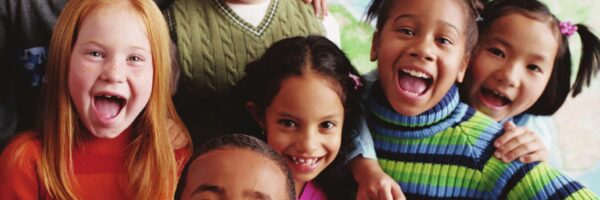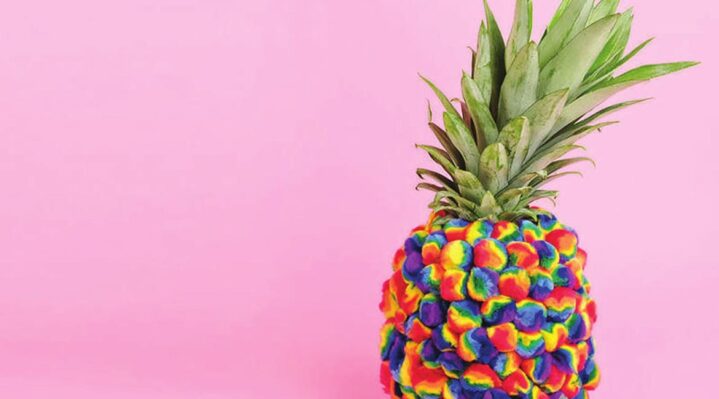
Creative Learning makes Creative Thinkers
Children and young adults are living in a world where they are expected to work smoothly in a
multi-disciplined work environment. by Thomas Groves, M.A., PGCEi
Digital media integration to everyday life has reached a level where doctors, researchers, teachers, accountants and tradespersons etc. are expected to be creators, visual and media literate, on top of their specialised discipline. The issue is that, in most cases, media literacy is left for higher education while creative project-based learning tends to stop after early years of education.
Despite the efforts made in primary and secondary education to include such topics in their curriculum it is often viewed as a subject section to be taught during a specific timeframe and until completion of that specific unit it is not seen as a subject just as important as first language courses, Geography, Science, Maths etc. As it becomes easier to create ‘fake news’, with improving access and media users statistically getting younger it is extremely important to become media literate.
Media literacy will allow students to deconstruct the message they receive and understand the specific medium used. The image making process plays an important role in media literacy education. The students’ ability to deconstruct an image can only start once they understand how that image was built.
The Image Making Process is the theory of cognitive decisions made to help the viewer understand the image. This includes graphic shapes (circles, squares, triangles), colour and volume, visual contrast (simple vs complex shapes, shallow vs deep) and much more.
I have been a university lecturer for over 9 years and have noticed that many of my students lack these skills at the beginning of their freshman year, most often those who do possess these skills have gained them as result of their own personal interest and efforts.
I started to wonder how my freshman literacy and production teaching methods could translate to a much younger age group. Through the Denotative Image Making process I decided to explore the learning and understanding of a younger demographic. Over the years I have developed a positive relationship with my son’s school and after much discussion was given permission from the educators and parents to run a class on the Denotative Image Making Process.
I am not a new face to these students as I have volunteered to teach a subject with them before.
John Dewey, a philosopher, psychologist and educational reformer developed a theory back in 1933 called the Developmental Spiral. This is where experience, reflection, conceptualisation, and experimentation are in a constant cycle of the students development.
Keeping this theory in mind I wanted to make an engaging interactive lesson for students to actively participate and experience during the teaching session. This would be followed by students creating their own projects showcasing their level of understanding. For research purposes I collected data, student interviews, addressed strengths and weaknesses of the process, analysed and examined the results to improve future teaching techniques. This research followed strict IRB regulations and will not be shared in this piece.
Understanding?
The longer you teach and study education the more the idea of ‘understanding’ changes. What does it mean when a student understands? Such a simple concept carries different definitions amongst teachers and students alike. In some cases, the definition can label a student for their academic career and cause more harm than good. We often confuse intelligence and understanding as being the same.
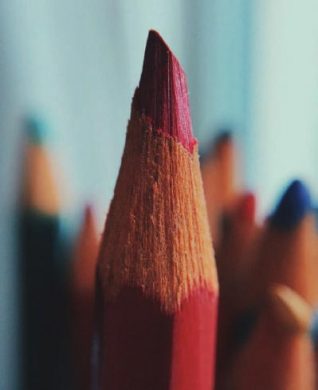
Howard Gardner, a psychologist, defined intelligence as the capacity to solve problems or to fashion products that are valued in one or more cultural settings. Carol Dweck, a developmental psychologist, developed a theory of fixed and growth mindsets based on the students’ ability, motivation and capability to expand their ‘intelligence’.
This is where students are often labelled and can cause developmental issues. My personal definition of ‘understanding’ is that the student has the ability to apply their learning process, knowledge and skills into a form on their own with the ability to share this understanding with others.
Similar to the old saying that you only really understand a language when you tell a joke and laugh. Students, of all ages, will often disengage from a task, denotative image making for example, if they do not categorise themselves as visual learners or ‘artists’. I often hear comments like ‘I cannot draw’ or ‘I do not know what to do with the paintbrush’ even before the students attempts to demonstrate their level of understanding. In every single case, after encouraging students to try, I receive a comment similar to ‘I didn’t know I could do that’.
The lesson
As the grade 7 students walked into their classroom to find the desks covered in recycled paper, crayons, pencils, paint, brushes and an assortment of art tools. I announced my plans “Today we will explore the denotative image making process” which drew blank faces amongst the students.
None of them knew what I was talking about or why it was important but were excited that there was paint on the table. I explained that today’s lesson would not have a PowerPoint, handouts or require students to take any notes. I would require them only to follow along with me and later create their own project. This brought a look a relief on some and pure panic for others.
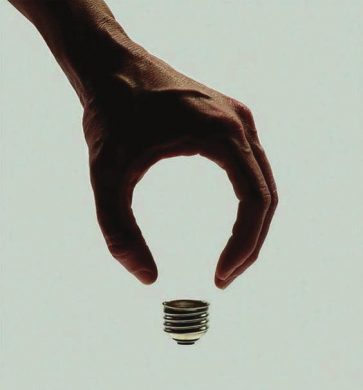
Lev Vygotsky introduced a concept know as the Zone of Proximal Development. This refers to what the learner can do with help and what they can not do. I understood that using the art tools would be with in their Zone of Proximal Development but I was more interested in the understanding of the process in order to get the exact same image, using the same method, more than once.
During the lesson I explained terms such as ‘generation’, ‘iteration’ and ‘media’. Generation being the number of images you make using a specific method. For example, you press an eraser onto a stamp pad and press that eraser onto a piece of paper, you do not place it back on the ink pad, multiple times.
You would than label each mark with a number representing the generation of the image. These labels help the image maker know how to achieve a consistent look even with long periods between image making. Iteration is the practice of using the same method multiple times to ensure the look is consistent. While media refers to the tools and display formats used to showcase their images.
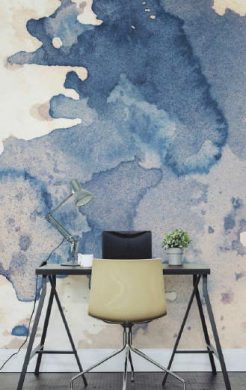
The object that students were making at this stage was controlled. As a collective we all had selected the same object which allowed the learners to experience and reflect on the method rather than the object. Introducing new methods allowed time for conceptualisation and experimentation. Increasing the learners experience.
After the ‘teaching’ part of the lesson I asked the students to put their examples in a pile beside them, change the recycled paper with some new fresh paper, clean their work stations and to imagine an object that they can find in their house and create 5 final unique pieces of that exact same object.
The buzz of excitement through the class meant that my learners were engaged in the activity. At the start I had some students nervous about the image making process but at this point I had 100% engagement as students started to experiment and develop methods that made sense to them.
As students began to create I heard comments “I wonder how to do”, “if I try this” or “what happens when” which is an important part of experimentation and their development of understanding.
What I found
I have to take into consideration that my lesson with these students was limited and a fixed time and does not constitute a large sample to provide an exact analysis and result but it did help me look at the learning and understanding process.
I found that the success output positively reflected the developmental spiral. Through the cycle of experience, reflection, conceptualisation and experimentation students became more confident and creative. Students were able to solve problems of how to select their household object and to make the image in their mind, where with the controlled lesson faced difficulties in conceptualising the object.
When I asked selected students to recreate one of their final 5 images and explain the method, they were able to do this. For those that had slight difficulty they were able to look at their generation sheet to remember the exact method.
Ideally I would return for more classes and ask all students to recreate a piece of work. I would further develop topics such as connotative image making, typography, digital art etc. This would be followed by asking students to deconstruct media made by others.
“Teachers and students spend hours every day with each other. It can be difficult to keep an energetic feeling in the classroom and maintain learning – adding creative activities can deepen the learning process and understanding of a topic.”
Teachers and students spend hours every day with each other. It can be difficult to keep an energetic feeling in the classroom and maintain learning. Adding creative activities can deepen the learning process and understanding of a topic.
It is important however to make sure that these creative activities are challenging, create opportunities and is enriching to the topic. It serves no one, student or teacher alike, to create a lesson for the sole purpose of fun. Developing a creative lesson can be challenging so it is important to keep a few steps in mind. It is important to make creativity a regular theme in the learning practice.
The more a student can participate in the cycle of experience, reflection, conceptualisation and experimentation the more their Zone of Proximal Development increases. It is important to focus on your students’ creativity. Not all students’ follow the same creative process but beautiful things arise when these learners can combine their unique skills.
Make sure that as a teacher you collect feedback, add variation and develop meaning in your activities. The goal is to develop understanding, create new zones of challenge and expand awareness of problem solving. Avoid the same content and meaningless ‘fun’ projects. The preparation will be difficult but the results will be well worth it.
A safe classroom filled with support is a classroom students are willing to take a risk in and challenge new concepts. If there is a connection between teacher and students a sense of security, classroom culture and cultural awareness is established.
Share, share and share some more! It is amazing to see how different works, media, and genres can inspire students and teachers. Keeping examples for learners can help motivate and develop new creative thinking methods.
These methods are not only applicable for primary and secondary education they also hold true for higher education. I am in a state of constant curriculum development for my courses on how best to teach a subject. My focus is not only on the test and grades in my courses but also on my student’s understanding of the subjects. Can they creatively solve the problems they are faced with? I teach courses which classically fall under the ‘creative arts’ department but I also lecture theory courses.
I make sure that both classes contain just as much creativity to benefit the learners. This keeps my courses fresh and allows my students to develop their Zone of Proximal Development. We need learners to think outside of the box in today’s fast paced world and the only way we will be able to do this is by developing creative media literate learners.
This article in no way should be seen as discounting the work of all of the amazing teachers out there who spend thousands of hours in the classroom and outside to develop amazing classes for their students. My goal is merely to encourage a
thought process on how, or even should, creativity and media literacy be integrated into more classrooms.


